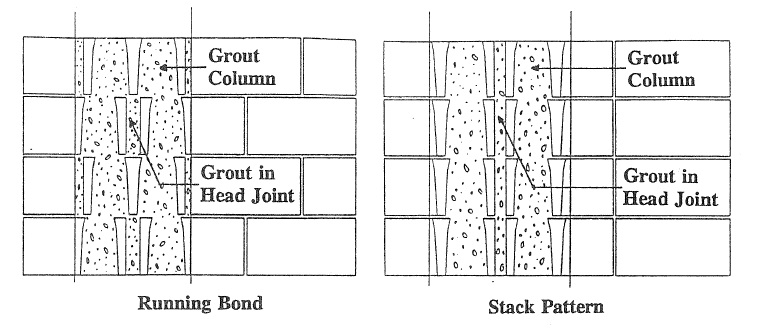M. STEADMAN, R.G. DRYSDALE AND M.M. KHATTAB
ABSTRACT
Thirty-nine prisms were prepared and tested under uniaxial compression to investigate the effect of grout on the compressive strength of grouted concrete block masonry. The variables considered included the block geometry as well as the grout type and strength. Blocks with pear or rectangular shaped cells that had flared or non-flared face shells and webs were used in preparing the specimens. Both fine and coarse grout were used and the grout strength was changed by altering the mix proportions. Grouting masonry has been found to increase the load carrying capacity of the grouted masonry assemblage, but based on the increased area resulting from grouting, not always its strength (fl m)’ Using coarse aggregate in the grout mix resulted in higher compressive strengths than when grout containing only fine aggregate was used. Choosing strong grout emphasized this effect. Furthermore, improving the alignment of the grout columns formed in the cells of the blocks and increasing their cross-section by using non-flared face shells also added to the contribution of grout.
F-47



